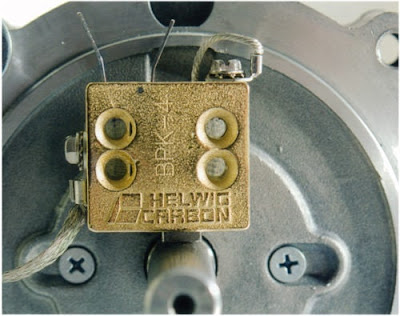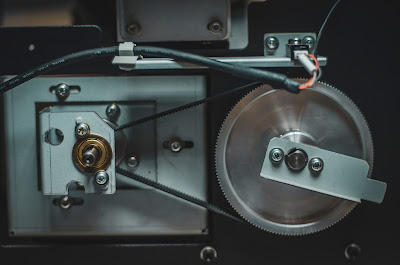Ball bearing limiting speeds
Ball bearings are an essential component in countless machines and equipment. The proper operation of these bearings is critical to the performance and longevity of the entire system. One crucial aspect of ball bearing performance is the limiting speed, which defines the maximum rotational speed that the bearing can withstand before experiencing damage or failure. Understanding and calculating the limiting speed for ball bearings is therefore essential for ensuring optimal performance and preventing catastrophic failures.
In this blog post, we will dive into the topic of ball bearing limiting speeds in detail. We'll explore the various factors that affect these speeds, including the size and design of the bearing, the type and viscosity of the lubricant used, and the external operating conditions. We'll also discuss the different methods for calculating limiting speeds, ranging from simple analytical formulas to advanced computational simulations. Finally, we'll provide practical examples and case studies from various industries, illustrating the importance of taking into account the limiting speed when designing and operating ball bearings.
1. The limiting speed is the maximum amount of speed that a ball bearing can handle without causing damage.
In the context of ball bearings, limiting speed refers to the maximum allowable rotational speed at which a bearing can operate without being damaged due to excessive heat or stress. The limiting speed is determined by various factors such as the internal geometry of the bearing, the size of the balls, the material of the components, and the type of lubrication used. Therefore, it is critical to accurately determine the limiting speed of a ball bearing for its intended application to avoid compromising its reliability and longevity. For an optimal performance, it is essential to ensure that the operational speed of a bearing does not exceed its limiting speed. Failure to adhere to this requirement can lead to accelerated wear and tear, lubricant failure, and ultimately, bearing failure, resulting in downtime, increased maintenance costs, and potential safety hazards.
2. Exceeding the limiting speed can cause premature wear, overheating, and eventual failure.
Ball bearings are a crucial component of various machines and systems. As such, it is important to understand their operating limitations to ensure their longevity and optimal performance. One key consideration is the limiting speed, which is the highest rotational speed that a bearing can safely operate at without experiencing premature wear, overheating, and eventual failure. It is essential to abide by this limiting speed and ensure that it is not exceeded, as doing so can cause irreversible damage to the bearing and negatively impact the overall function of the machine. It is important to consult with the manufacturer's instructions and recommendations to ensure appropriate selection and use of ball bearings to avoid exceeding the limiting speed and to optimize the long-term performance and lifespan of the system.
3. Factors that can affect limiting speed include load, lubrication, temperature, and material composition.
Ball bearings are a critical part of many mechanical and industrial applications, and the maximum limiting speed of a ball bearing relates to its performance and durability. Several factors can affect the limiting speed of ball bearings, including load, lubrication, temperature, and material composition. The amount of load a ball bearing is subjected to during operation can impact its speed and longevity. Similarly, proper lubrication is vital to ensure optimal performance, as insufficient lubrication can lead to increased friction and wear. Temperature can also impact limiting speeds, as excessively high or low temperatures can cause degradation of materials or changes in lubrication viscosity. Finally, material composition is an important consideration since different materials have varying material properties that can impact bearing performance at high speeds. To ensure optimal performance and longevity of ball bearings, it is crucial to consider all these factors when selecting and using ball bearings in different applications.
4. To determine the appropriate limiting speed for a specific ball bearing, consult the manufacturer's specifications and guidelines.
Ball Bearing Limiting Speeds
When it comes to ball bearings, determining the appropriate limiting speed is crucial to ensure optimal performance and prevent damage. To achieve this, it is recommended to consult the manufacturer's specifications and guidelines. Every ball bearing has unique characteristics, and the manufacturer's specifications provide critical information that may affect the limiting speeds. Such factors include the bearing's size, cage design, materials used, lubrication, and operating conditions. It is essential to note that exceeding the limiting speed can cause overheating, increased wear, and eventually lead to failure. Therefore, it is good practice to determine the appropriate limiting speed for a specific ball bearing and stick to the manufacturer's recommendations for optimal performance and longer service life.
5. Regular maintenance and monitoring of ball bearings can help to prevent issues with limiting speeds and prolong the lifespan of the bearing.
Regular maintenance and monitoring of ball bearings is essential for prolonging their service life and preventing potential issues with limiting speeds. Any deviation from the recommended conditions may have a significant impact on the bearing's performance and the overall response of the machinery. Monitoring and inspecting the bearings on a regular basis can help to identify any issues before they become critical. The inspection process should consider factors such as temperature, vibration, noise, and lubrication. Regular re-lubrication intervals and the use of high-quality lubricants will help ensure that the bearing operates optimally and lasts for longer periods. In conclusion, by regularly monitoring and maintaining ball bearings, it is possible to avoid premature failure and to optimize the performance of industrial machines by preventing limitations in the maximum speed that can be achieved reliably.
In conclusion, ball bearing limiting speeds are an important consideration when selecting bearings for a specific application. Understanding the factors that impact the limiting speed, such as bearing design, type, and lubrication, can help ensure optimal performance and longevity of the bearing. It is crucial to work with a knowledgeable bearing supplier that can assist in identifying the right bearing and lubrication for your application to achieve the desired speeds and avoid premature bearing failure. By taking these factors into account, manufacturers can make informed decisions when selecting ball bearings for their applications.




Megjegyzések
Megjegyzés küldése